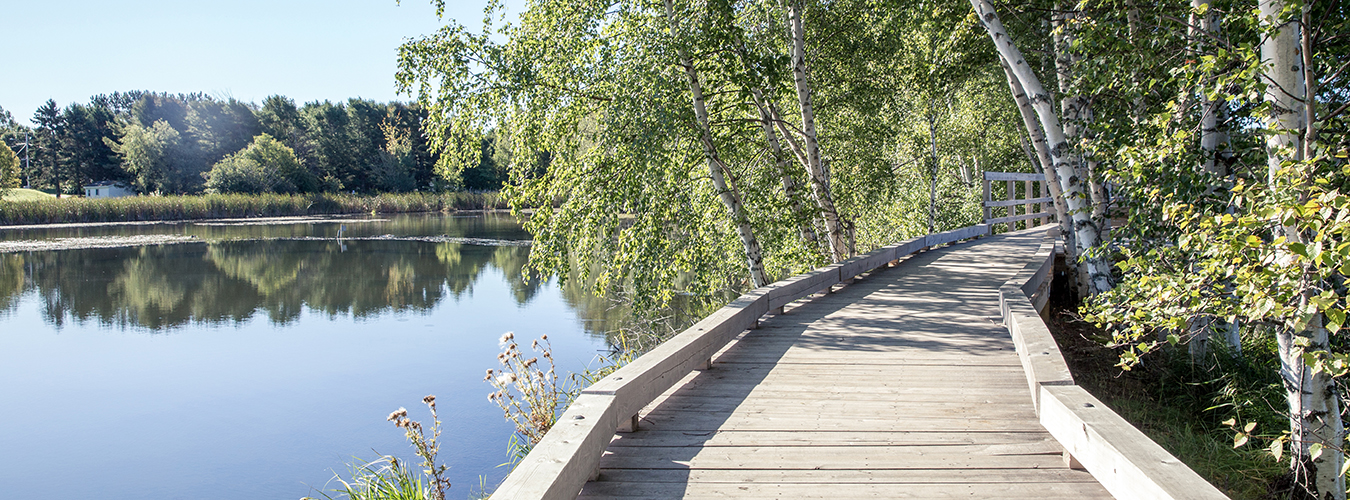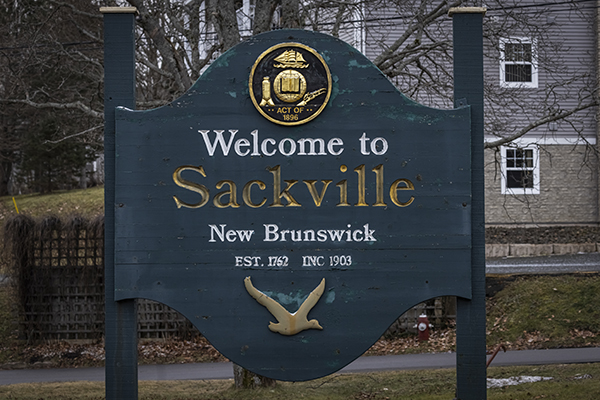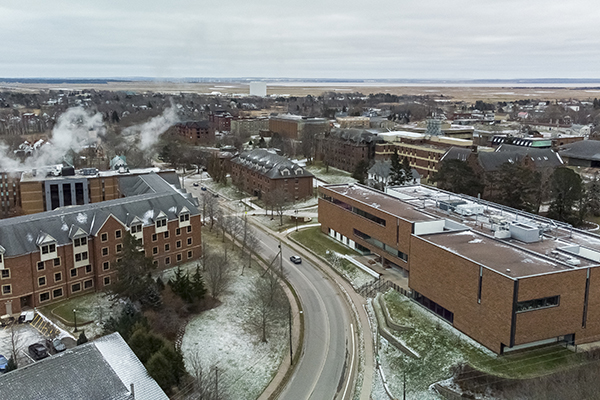Last year, when New Brunswick’s quaintly beautiful administrative district “Entity 40” chose to be known evermore as Tantramar, a light went on: Now,
I remember why I changed my name.
I was 11. “Well, what do you want to be called then?” my father asked me, as I looked at a bottle of pasta sauce sitting on the counter and wondered what kind of fiend would name his kid “Boyardee.”
“Just not ‘Sandy’,” I shrugged. “It sounds … stupid.”
“It seems to me you have a couple of choices,” he said, as he fetched an ancient copy of the Encyclopedia Britannica, which was our version of Google in 1971. Leafing to the entry for “Alexander the Great,” he explained that since my name was actually “Alexander,” I could choose any number of diminutives other than “Sandy.” I could go by, for example, “Alex,” or the more Scottish sounding “Alec.”
I brightened and said, “Alec” with a “c.”
From that day forward, almost everyone I’ve ever met, many of whom became close friends, has called me “Alex” with an “x.” They certainly did in Entity 40 — or, if you prefer, the town of Sackville, where I spent the summer I turned 14 taking guitar and swimming lessons, vainly explaining what to call me.
It’s with a “c” for crying out loud! How hard is that?
Now, nearly 50 years later, I wondered how dear old Sackville was handling its own moment of nomenclative truth (which officially arrived on Jan. 1). Did the town, originally designated 250 years ago for an English viscount whom one history book said was responsible for losing the colonies that became the USA, already regret adopting a new tag derived from an Acadian term for noisy flocks of birds? (Tintamarre.)
Name change
Anything was better than Entity 40, the moniker that New Brunswick government officials had temporarily slapped on the community after they’d decided to merge Sackville with Dorchester and a bunch of other nearby villages a couple of years earlier. The bigger, broader community would, of course, need a permanent new name.
Sackville mayor Shawn Mesheau seemed to agree but not in any way provincial bureaucrats might have found helpful or useful. “Sackville is a new kind of small town,” he wrote in a letter to New Brunswick local-government minister Daniel Allain in the summer of 2021.
“We have a hospital. We are home to Mount Allison University, which is regularly recognized as the number one primary undergraduate university in Canada.
“We have an abundance of cultural attributes, such as museums, galleries, and artists, and innovative employers in the industrial sector. We are a hub for the surrounding region and residents who visit Sackville for groceries, banking, medical appointments, and access to government services, such as the post office, Service New Brunswick, and the Southeast Regional Service Commission.”
In short, dear mesdames et messieurs, “We agree that there is room for improvement in our current local governance model (but) Sackville would object to any forced amalgamation.”
New kind of small town
Mesheau, whose protestations were duly noted in Fredericton, lost his bid to become the new municipality’s first mayor when his deputy Andrew Black defeated him in an election last November. Still, he’s more relaxed about the changes now; “Tantramar” sounds just fine to him.
“I’m making history here being the last mayor of the Town of Sackville,” he says. “I think folks were worried about kind of losing the identity of their communities. But the fact is that we have to look at what we can do together to help each other out. Amalgamation isn’t really a new thing. It was just a big thing for us. I mean, we did go from (3,000) to 9,100 people and a tax base of a billion dollars.”
I do understand what he means when he says, “Sackville is a new kind of small town.” Although many places in the Maritimes can justifiably claim to be “hubs” for any number of other places, this place does seem like an immaculate merger of memory and modernity.
My grandfather Charlie Bruce left a farm in small-town Nova Scotia to attend Mt. A. He graduated in 1927, having led his senior debating team to a rare victory over Harvard University. He was so enamored of his years there — its willowy, ivied campus; its stacks of newspapers and books from all over the world — he recommended the university to my father, Harry, who, having matriculated from his Toronto high school, hopped on an eastbound train in the fall of 1953.
In 1974, the same year he shipped me off to Mt. A. for swimming and music lessons, he, then a well-known Canadian journalist, wrote about his sojourn there for Maclean’s magazine:
“Sackville sits on the edge of the Tantramar marshlands, and the wind tears in off the Bay of Fundy, and it’s wet, and it sweeps across huge plains of gleaming muck and over miles and miles of strange desolate hay, and then nips around the red sandstone buildings of Mt. A’s beloved little campus and under skirts and right through sweaters, and it lays chilly hand on your ribs.”
Though he complained about the parochialism of that place, he wrote, “I felt in the yearning of my teenaged soul, in my itching blood, that everything that mattered to me was happening right there. In the spring, I’d sing myself all the way home to Toronto. But in the fall, I’d be back on campus a week earlier than I had to be, a week earlier than all the other kids, striding alone through the great, hot days of a fading Tantramar summer and feeling in my poet’s heart a curious joy.”
These days, there’s a “curious joy” in Emily Falvey, the director and curator of Owens Art Gallery, located on the Mt. A. campus. She presides over a 4,000-piece collection. It spans two centuries, including the works of “old” masters like Alex Colville, and new ones like Melissa Peter-Paul, a Mi’kmaq quill artist from Abegweit First Nation, Epekwitk (PEI).
Falvey, a Nova Scotian, got her start at Owens as a student in the 1990s. She went away to study and work in Montreal.
In 2018, she came back to take over the joint, the oldest university salon of its kind in Canada. She’s never looked back; only forward, in a Sackvillian sort of way.
“I was really happy to get the job because it kind of feels like a circle,” she says. “There is a real community here, and I think we are very connected to it. I’m super impressed with all the work that’s been done to make those connections … from our curator of education and media outreach … to our curator of digital engagement. They really were kind of a dream team during the pandemic. Although we were closed for a year, they were able to come up with alternative programming. In fact, our community engagement numbers went up instead of down.”
As for the whole amalgamation thing, she says, “It’s been contentious. The process has been difficult … Let’s put it that way.”
The place remains the same
Matt Pryde, manager of programs, recreation and events for the town formerly known as Sackville, agrees with Falvey. He says, “It really depends on who you talk to. Some people embrace change.”
But the main point is that names don’t change whatever is essential about a place. In this respect, Tantramar is no different than any other amalgamated community in Atlantic Canada. Consider the great debates that swirled before the City of Miramichi, NB, emerged from the bones of Newcastle and Chatham in 1994 or, indeed, the prosaically dubbed HRM from Halifax, Dartmouth, Bedford, etc. in 1996. Each project had supporters and detractors. Each camp had their points. Everyone got out alive.
Sackville’s “place will always be here,” Pryde says. “I moved here from Truro in 2014, and I was really surprised with how much was really going on here. There was a strong music scene. You could go out just about any day of the week and see a band. There are festivals and events going on all the time, it seems, especially in the summertime. There are three different art galleries in town.”
Indeed, Falvey says, “It’s not just the visual arts community. We’ve seen a lot of in-migration over the pandemic. There’s theater. There are writers. There are lots of musicians.”
There’s also the Cube.
Back in 2019, Nova Scotian cranberry farmers Evelyn and David Ernst teamed up with a partner in Ontario to erect a 14-storey building in Sackville’s industrial park. It looks like a miniature spaceship hangar, but it’s actually a massive, fully automated, steel-reinforced freezer for their (and other producers’) berries. The reason for putting it there rather than, say, Halifax was simple.
Says David: “I reviewed other locations, but the idea was that this had to be on the export route from PEI and within view of the Trans-Canada Highway… People think Sackville is in the middle of nowhere, but it’s really in the centre of Atlantic Canada.”
In August 2020, when COVID-19 hit one of its frightful peaks, Falvey and a few of her pals at SappyFest arts and music festival and Struts Gallery looked hard at that huge block rising incongruously from the “plain of muck” and saw, in just one 145-square-foot side of it, a ready-made projection screen. What if they made a movie — say, a video montage of local artists, maybe a couple of screened concerts — and put it up there for everyone? No charge. “We split the cost three ways,” Falvey says. “We had crowd control, but in the end, we didn’t really need it.”
More than a couple of hundred people walked, carrying lawn chairs and blankets in the late afternoon sun, like pilgrims to some kind of Marshland Mecca.
A reviewer wrote later: “That the event happened at all sets an inspiring precedent in times that continue to be described as unprecedented.”
Falvey laughs. “It was actually one of my favorite memories of the pandemic,” she says. “If you know what I mean.”
I can imagine. I remember the summer of 1974, and the exact spot where the Cube now stands, and how the college kids would dart around the baking clay and weeping grasses on their way to classes.
I wrote a play and called it Tantramar. I signed it “Alec” with a “c.” But deep in my anxious, uncertain, hopeful soul — in the twilight of my childhood, with a notion of becoming bigger in small-town Sackville — I knew that “Sandy” hadn’t entirely vanished. It wasn’t such a bad name, after all.



